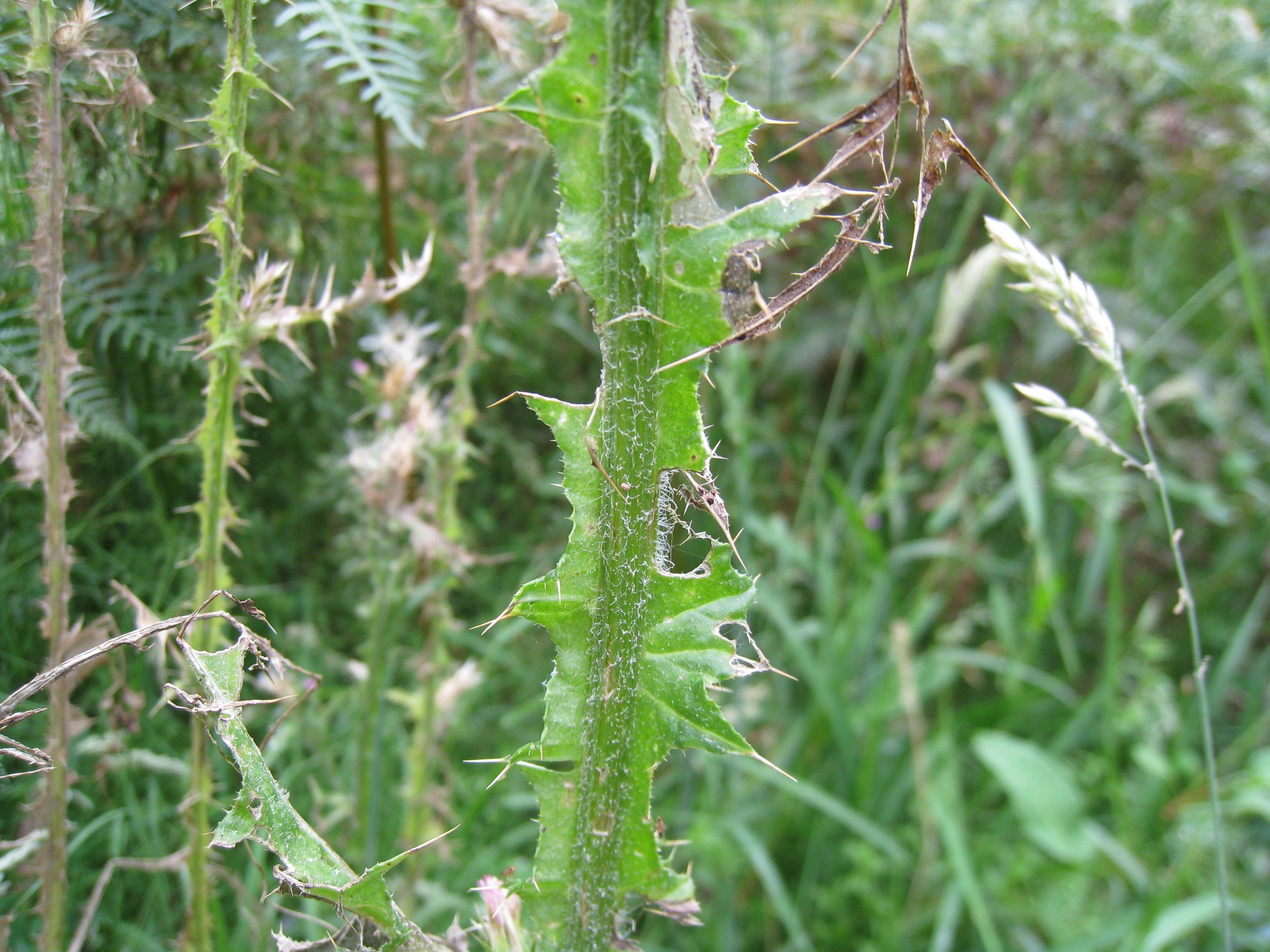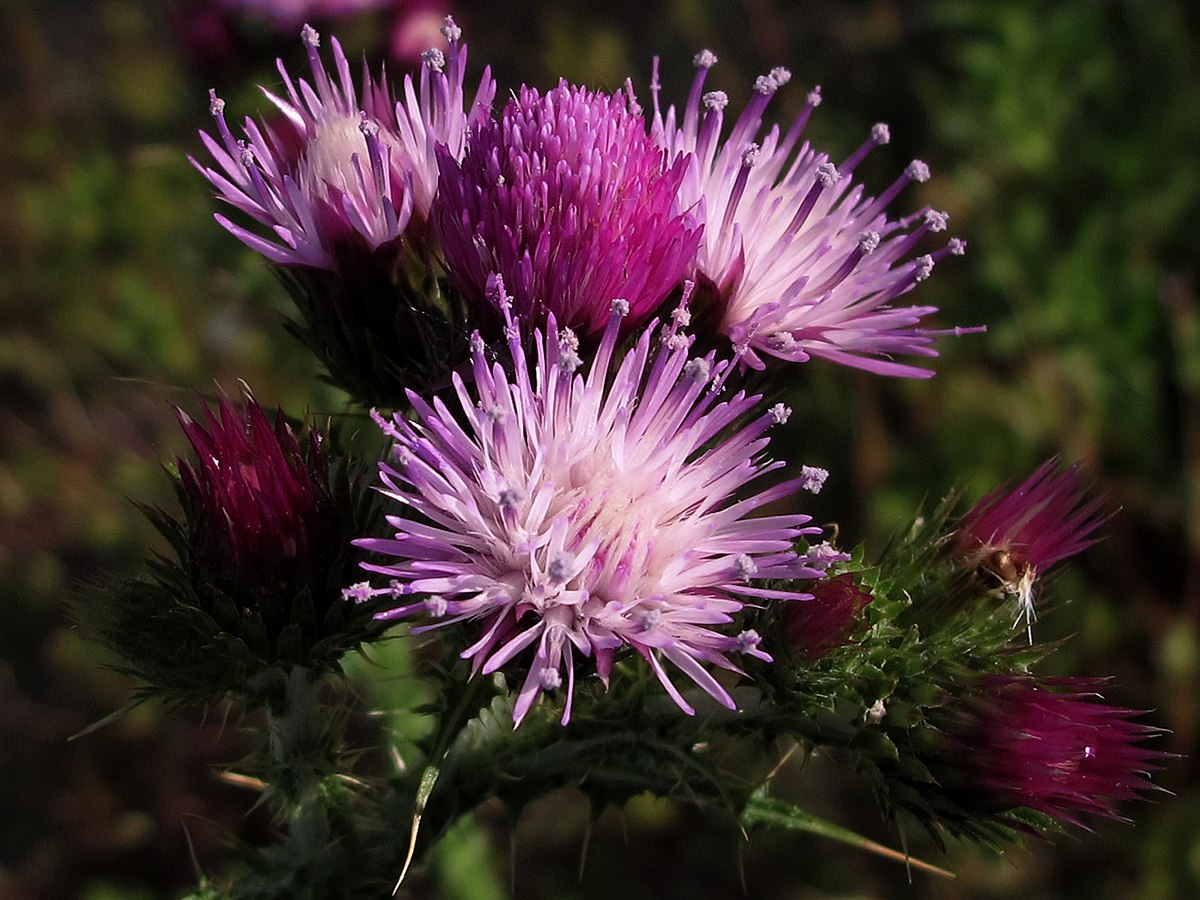Slenderflower Thistle

Slenderflower Thistle
(Carduus tenuiflorus )
Priority: - Prevent / EDRR
Tags: Agricultural | Terrestrial
Identification and Reproduction
Identification:
- Slenderflower thistle is a winter annual that is similar in appearance to the Italian thistle.
- Stems can grow up to 1.8 m tall, triangular and covered in spines and purple flecks.
- Leaves are deeply lobed and spiny, undersides are covered in cobwebby hairs.
- Terminal flowers appear in clusters of 5-20. They are small (2.5 cm), slender and pink to purple in colour. Flowerheads are covered in long spiny bracts.
- It flowers in early spring until summer; April-July.
Reproduction:
It reproduces by seed, which are easily dispersed by wind.
Habitat & Ecology
- This plant is found along roadsides, fields and recently disturbed sites.
- It prefers recently disturbed sites, particularly sites that have been recently burned.
- It thrives in fertile soils with moist conditions.
Impacts
Social:
- Reduces foliage availability and displaces native species.
- Displaces desired crop species.
- Can limit the mobility and injure livestock.
- Spines and dead leaves have also been prone to contaminating wool.
Ecological:
- This aggressive plant forms dense stands that displace native vegetation.
Management
Prevention is a high priority for this plant.
If you identify slenderflower thistle, report it.
Resources
For more information check out BugwoodWiki's datasheet on Slenderflower thistle.
For information on control options, check out the Weed Report on plumeless, musk, Italian, and slenderflower thistles from the Weed Control in Natural Areas in the Western United States. Please note, that this resource is based in the USA and reccomendations around herbicide use may not apply to the Fraser Valley,
Header photo (Javiar martin).




